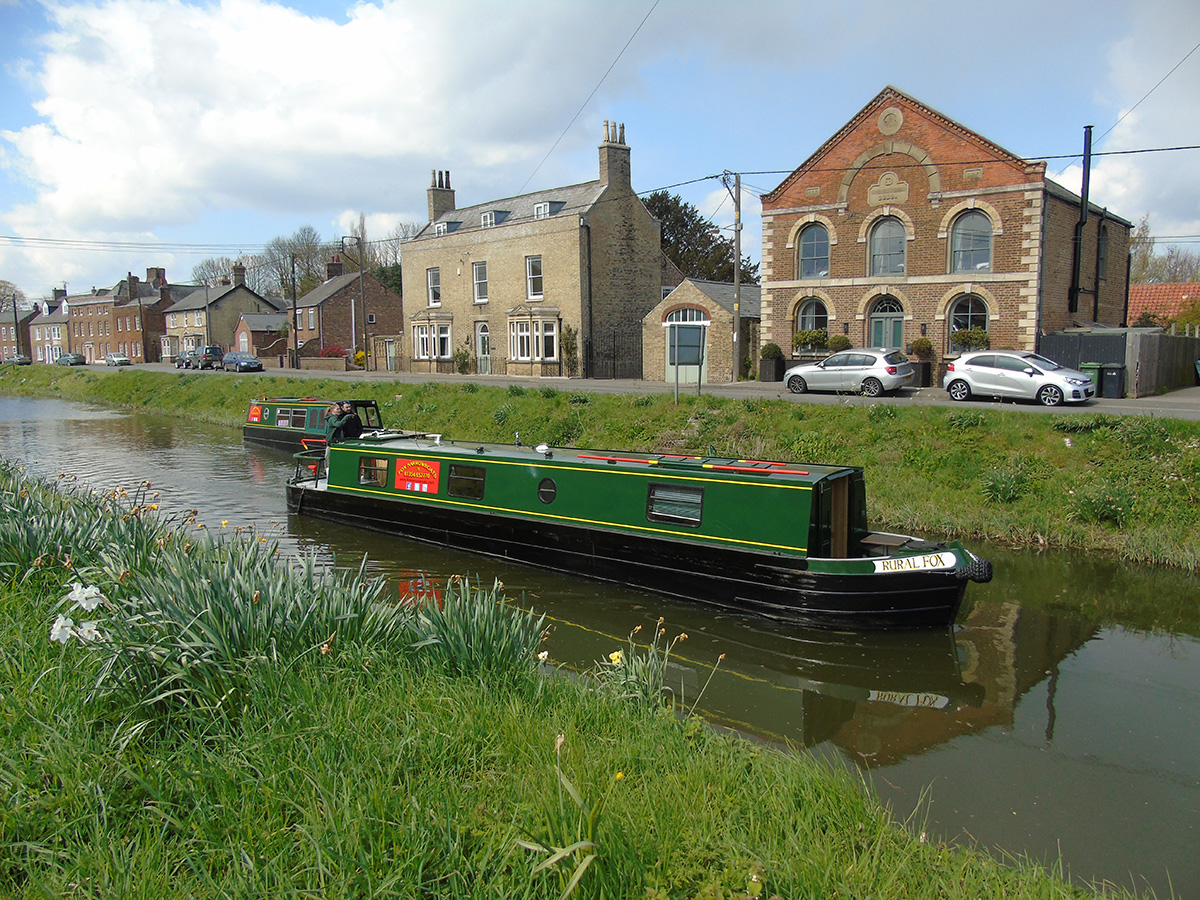
fox narrowboat hire on the fens waterways
Question – What’s green and yellow with a flash of red, floats below sea level, but isn’t a submarine ?
Answer – the Fox narrowboat that could be part of your next holiday!
The Fox narrowboat hire fleet is based on the Middle Level in March, in Cambridgeshire. The Middle Level is a largely man made group of rivers lying between the River Nene and the River Great Ouse. They were formed in the 17th century by the draining of marshy fens. As the land dried out it shrank resulting in (not a lot of people know this) most of the Middle Level being below mean sea level.
Fox boats give you unique luxury access to this beautiful and historic world, rife with wildlife, big sunsets and nearly forgotten history. Those of us who live or regularly boat here have kept this a well guarded secret, but I’m going to ‘spill the beans’ and let you in on it.
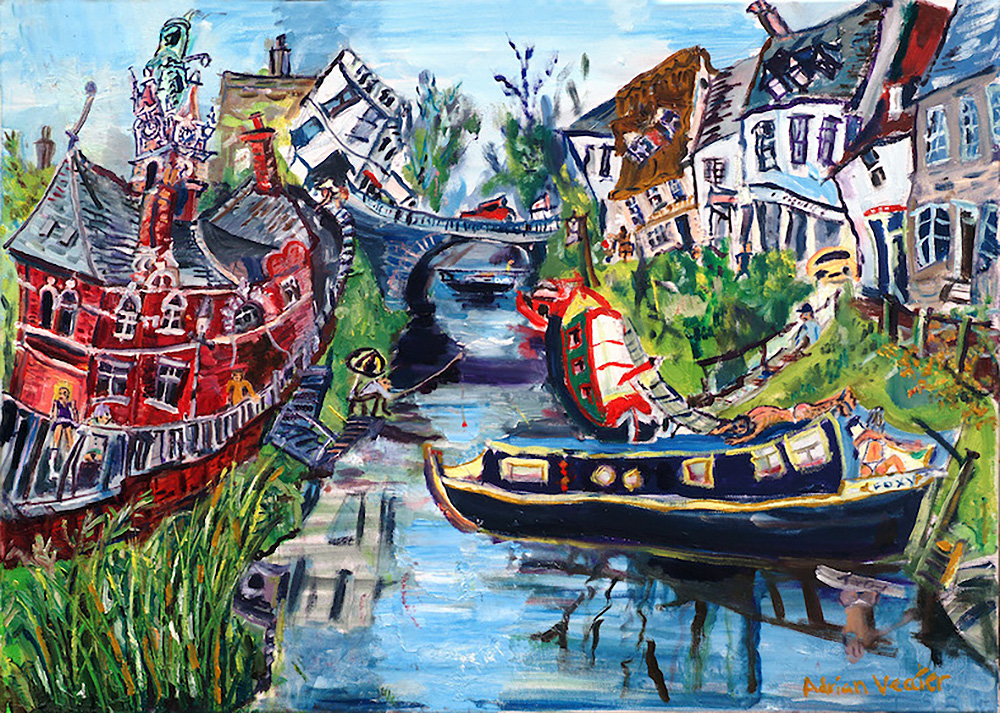
march waterways by local artist Adrian Veater Peterborough
Three out of four of the Fenland Market Towns offer visitor moorings. Although the big Tesco near the Fox hire base in March provides a good opportunity to stock up before your departure, the town centre moorings in March offer shopping opportunities, pubs and takeaways.
Ramsey
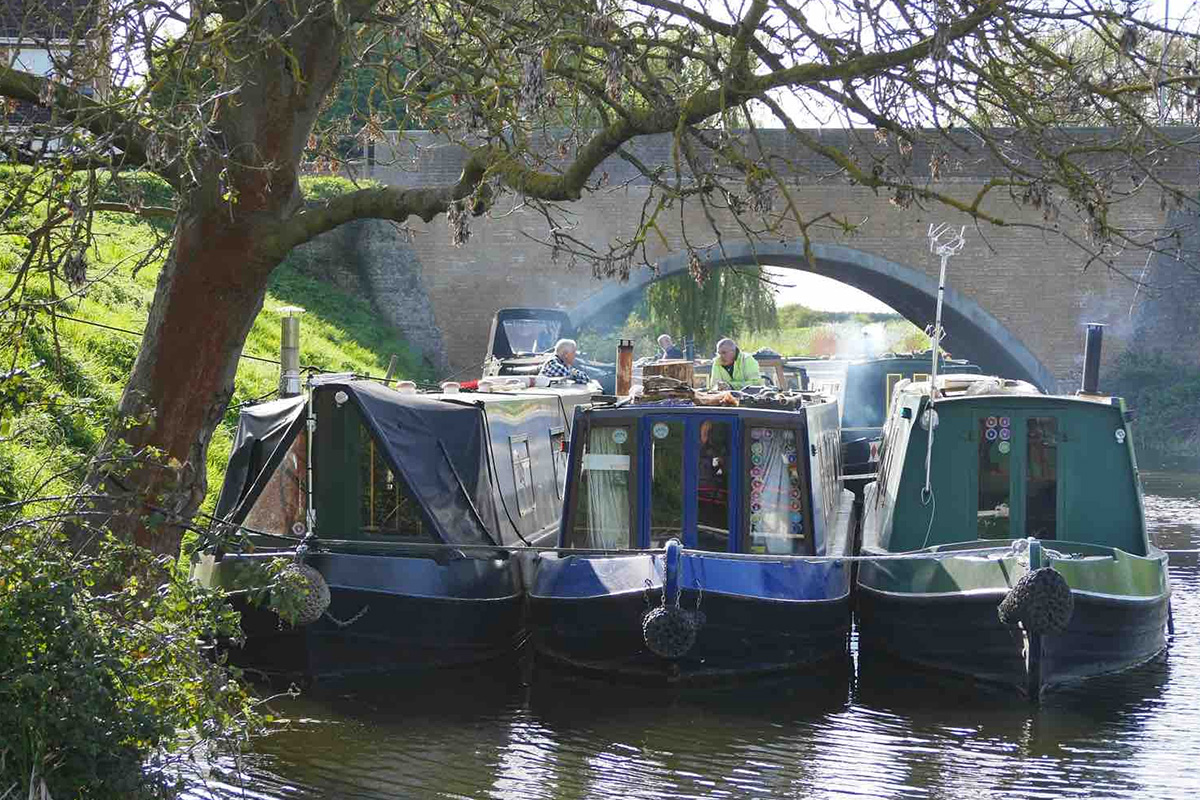
ramsey 40ft mooring
The extensive new visitor moorings in Ramsey finally offer the opportunity to explore this fascinating and rewarding town (also with a close by Tesco superstore).
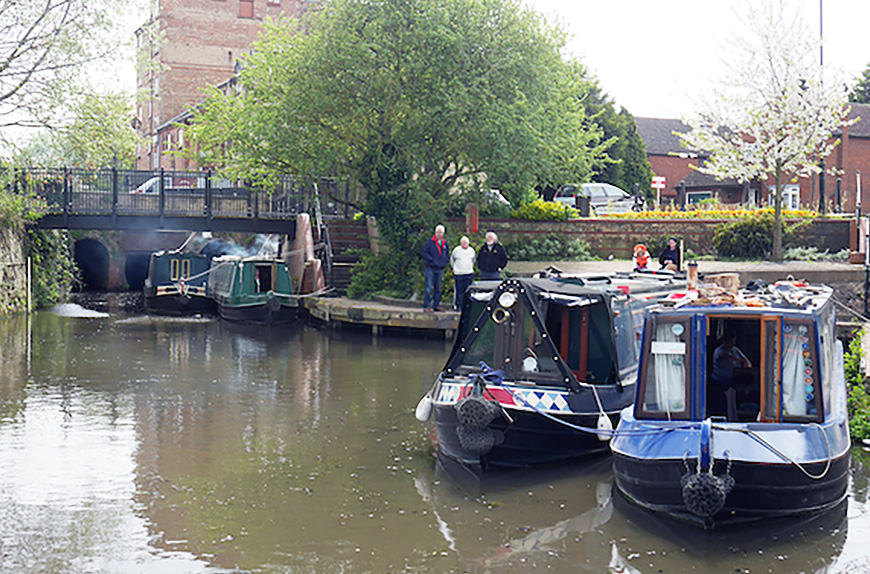
ramsey dock 2017
An interesting feature is the Great Whyte, the main shopping street which had previously been the port until the river was built over in the 1850s. The river still flows below and is visible from the morning’s (https://ramseytunnels.co.uk)
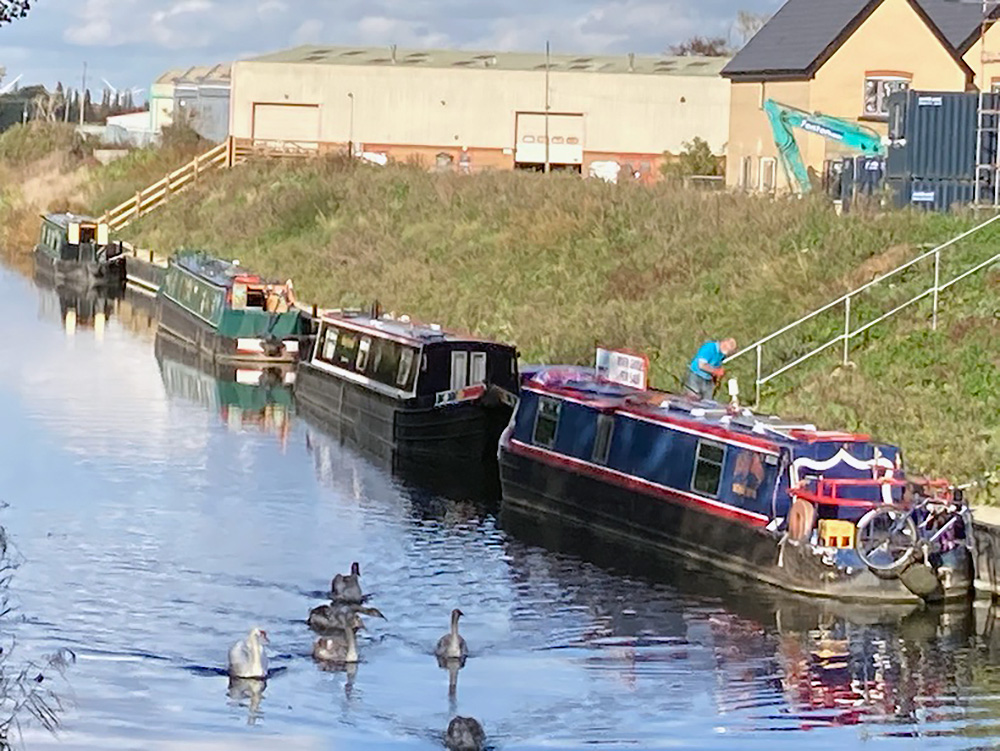
ramsey basin
Whittlesey
Whittlesey offers limited moorings at the back of a leisure centre and only a short walk from the historic market place. The highlight of Whittlesey’s year is the annual Straw Bear Festival in January when residents disguise themselves as bears by wrapping up in straw. (https://strawbear.org.uk)
Fenland History
Fenland has had many nicknames over the years and each one sheds a different light on the various aspects of its history.
Medieval
In Medieval times the area had a number of major ecclesiastical establishments, including Crowland, Ramsey, Chatteris and Thorney Abbeys, as well as Ely and Peterborough Cathedrals. Reflecting this ample provision for the spiritual, the name The Holy Land of the English was applied.
17th Century
Prior to the draining of the Fens in the 17th Century by a Dutchman, Cornelius Vermuyden, the area was often referred to as The Great Eastern Swamp, or The Old Drowned Lands.
The first drainage scheme was intended to provide relief from flooding during summer months and gave rise to the description The Summer Lands.
World War II
During WWII the productive rich black soil of the Fens was put to use feeding the country, which was in danger of going hungry as the German blockade of shipping tightened. The area then acquired the deserved nickname The Breadbasket of Britain.
The flat countryside, devoid of hills to disturb its great panoramic landscapes, has given rise to the name The Land of the Three-quarter Sky.
But we prefer to think of it as Fox Narrow Boat country!
In the Middle Ages Fenland enjoyed so many religious institutions that it attracted the description the ‘Holy Land of the English’. Not all have survived, but the March church of St Wendreda boasts a double hammer beam roof featuring 118 carved angels.
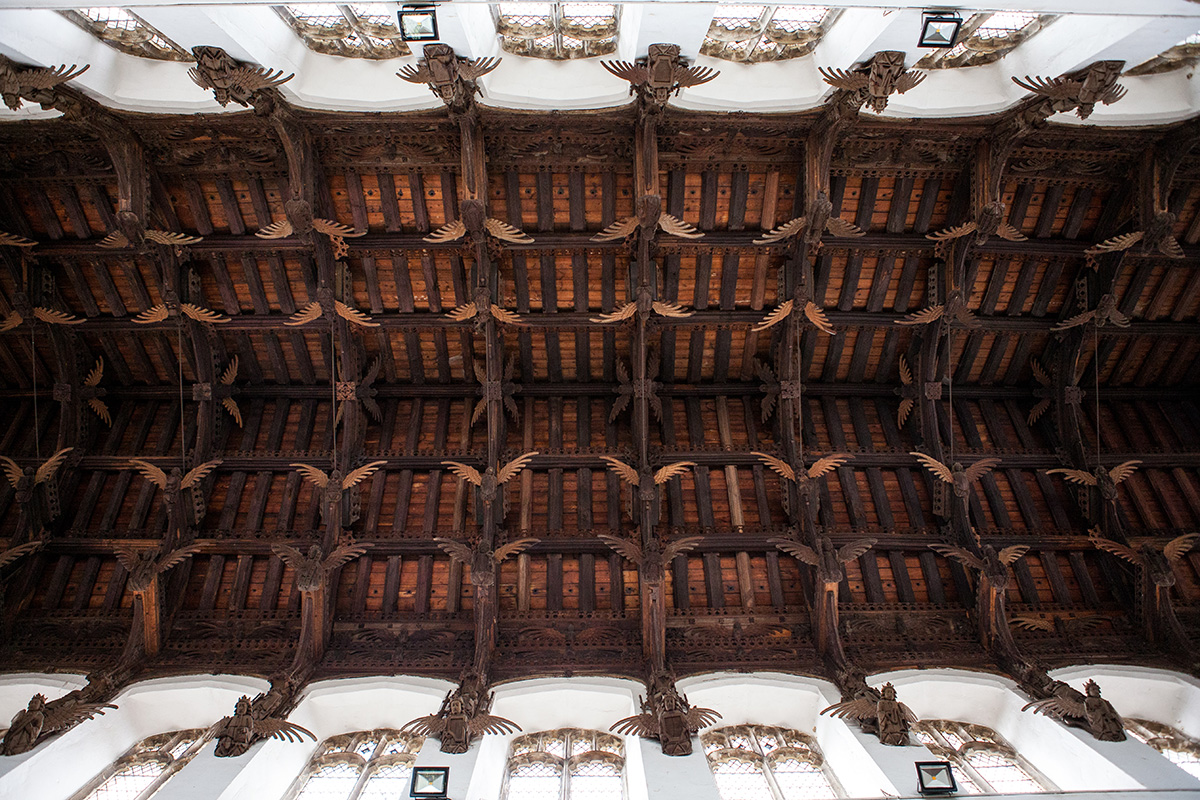
roof church st wendreda
The founder of the Victorian Society, and former Poet Laureate, Sir John Betjeman wrote that the angel roof of St Wendreda’s church was ‘worth cycling forty miles into a head wind’ to see.
Those who have braved a fierce Fenland wind blowing from the Urals, uninterrupted by hills or trees, will appreciate quite how much effort is required to cycle so far in these conditions. And those who have visited St Wendreda’s will also appreciate quite how well that effort is rewarded – though the roof remains just as spectacular, even if less strenuous means of transport are used when visiting!
In the 19th century the only way agricultural workers in remote Fenland villages went anywhere was by walking. In 1896 the Vicar of Stretham resolved that if people couldn’t easily get to church, he would take the church to the people.
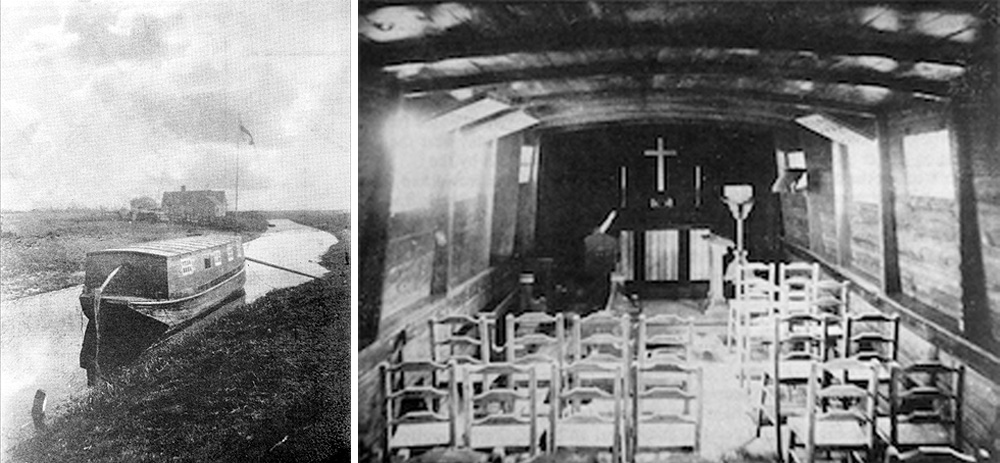
floating church fenland uk
In 1896 a floating church was commissioned to serve the Fenland parish of Holme. At the time Holme had 42 houses spread over a distance of between two and four miles from the parish church by road, whereas they were all within one mile of the river, and 26 of them practically bankside.
Unable to ring bells from a conventional spire (which wouldn’t have fitted under the low fenland bridges), the Floating Church (or ‘Ark’ as it came to be known) flew two flags, those of St Andrew & St George, to announce that services were about to start. Between its launch and October 1904, a choir was formed, needlework and bible classes held, and 74 baptisms are recorded as having taken place on board.
In 1907 the barge was abandoned near Ramsey St Mary before being sold off to a group of young men who renamed it ‘Saint’s Rest’, converted it into a houseboat.
I’m the author of the Imray boating guide “Fenland Waters” – available from Foxs. If you’d like to know more of the history of our ‘secret’ world I invite you to buy a copy. Chris Howes.
See our interactive fenland waterways map for historic sights, moorings, pubs, restaurants & things to see and do on the middle level.
If you are interested in exploring the Fenland Waterways Foxs have day hire narrowboats and holiday boats available.
Hey! Are you new here? Subscribe on the right to receive more secrets of the undiscovered Fenland waterways, by email. (We never share or sell email addresses, we’ll only be sending you our local, insider knowledge, every two weeks.)
Image Credit: Chris Howes (except: Fox Narrowboats; top image & church roof St. Wendreda)